Final report for WRGR19-04
Project Information
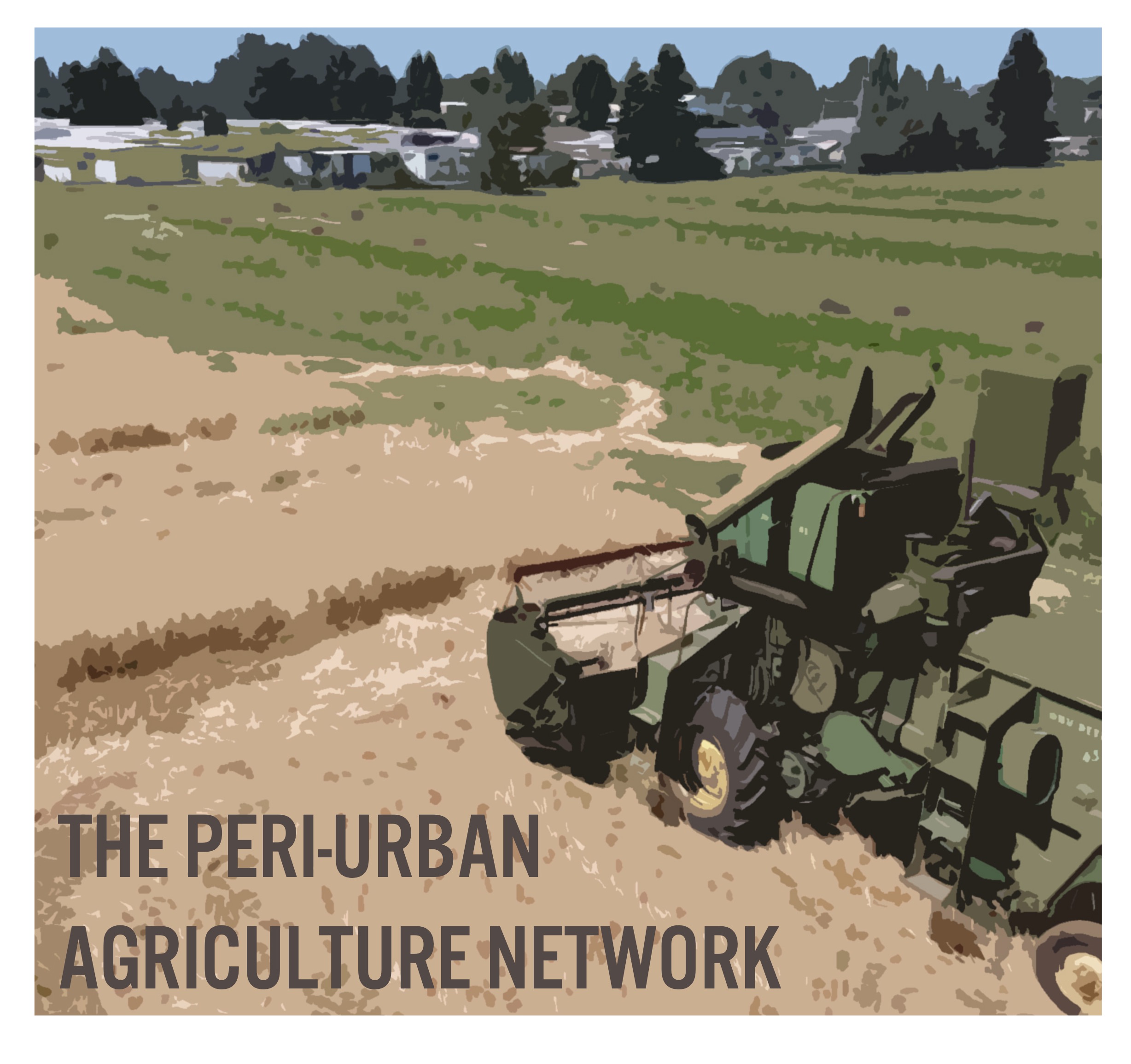
Many peri-urban regions in the western US are in a state of acute juxtaposition between formerly rural agricultural communities and growing, modern urban centers. Urbanization challenges agricultural viability through land use pressures and a slow unraveling of historically land-based economies and culture. These agricultural circumstances can be very destabilizing, and highlight the need for agriculture to be efficient, well-informed, current, culturally networked, and unafraid to evolve and diversify. Current trends in are giving rise to unprecedented opportunities for an agricultural renaissance and growth of a diversified, multi-tiered agricultural economy that supports 1) agricultural enterprises on a wide range of scales 2) innovative value-added market structures and 3) preservation of a land-based culture that values farming and food.
This project proposed an educational initiative focused on strategies for sustaining agricultural viability in regions experiencing acute urbanization and land use pressure. A Peri-urban Agriculture Network of producers and university, private, government, and non-profit stakeholder entities working in agriculture, community, and economic development was the core project deliverable. The network was initiated through 1) a first annual conference focused on information exchange and Network growth, 2) production of a 5-part, Network-branded docuseries chronicling the experiences of farmers working to adapt to urbanization, and 3) development of a website serving as a focal point for Network activities, aggregated information, and resources, including an index of past relevant SARE projects. The Network has been developed to be an ongoing, expandable, adaptable, evolving platform to move agriculture forward as a vital, contemporary economic enterprise and occupation in peri-urban contexts of the western region and beyond.
The original project objectives (and timeline) were significantly impacted by COVID-19 Pandemic disruptions and restrictions and modified accordingly.
- Development and establishment of a Network website that will facilitate network activities (including the conference) and also serve as a perpetual resource for peri-urban famers and stakeholders.
- Development and delivery of a Network conference to initiate the network community and refine that initial community’s understandings of peri-urban agriculture and its barriers and opportunities to long-term viability.
- 3. Development of a video documentary series chronicling the struggles and successes of peri-urban farmers to further understandings of peri-urban agriculture and The Network to a greater audience beyond the conference.
The western US is a national stronghold of large-scale agricultural commodity production, bolstered historically by a context of relatively low population densities. Meanwhile, as many western cities’ populations, economies, and cost of living rise, the viability of larger-scale agricultural commodity production near the urban fringe begins to erode. Conversely, contemporary cities with strong economies are also increasingly bastions of direct food markets, and innovative food-related businesses. Because the contextual dissonance facing many farmers in the peri-urban west is acute though, agricultural businesses under-informed about business evolution options are at risk of collapse. In accordance, farmland becomes at risk to be irreversibly lost to development. Similarly, those wanting to establish agricultural businesses in peri-urban regions because of emerging market opportunities also often face formidable barriers-to-entry with land and capital access.
Productive farmland lost to urban development is practically irreversible, but underlying causal circumstances may be managed to a degree. Policymakers and agriculture stakeholders can be educated to more effectively inform policies affecting farm viability, and about the long-term economic impact of agriculture and it’s benefits to a community’s quality of life, especially when farms use value-added business strategies. Education initiatives can help inform existing farmers about emerging markets, farm transfer strategies, diversified business structures, value-added approaches, and high-value specialty crops and agricultural products. Beginning farmers can also benefit from all of the former aspects, as well as education and networking for land and capital access, strategies for farmland rental negotiations, and farmer association/network development.
This project proposed an educational initiative focused on strategies for sustaining agricultural viability in regions experiencing acute urbanization and land use pressure through development of a Peri-urban Agriculture Network. A R2GR project was targeted because the SARE project database holds a wealth of information and an index of individuals doing work pertinent to this project; the diverse array of SARE projects from different regions were used to inform the project trajectory, and identify of solutions working towards peri-urban farm viability. The final deliverables of a Network website, video series, and annual conference are together intended to provide a concentrated, perpetual platform for inciting collective impact on peri-urban farm viability and to highlight the important role this agricultural sector plays towards long-term food security and the economic sustainability of a community.
Cooperators
- - Producer
- - Producer
- (Educator and Researcher)
- (Educator and Researcher)
- (Educator and Researcher)
- (Educator and Researcher)
- (Educator and Researcher)
- - Producer (Educator)
- (Educator)
Education & Outreach Initiatives
1. Development and establishment of a Network website that will facilitate network activities (including the conference) and serve as a perpetual resource for peri-urban famers and stakeholders.

Website development was initiated in 2020 and the Network's domain name was secured as www.periurbanagriculture.org. Progress was delayed after and the onset of the COVID-19 pandemic in March 2020 and subsequent personnel challenges, but was revived to go public in October 2021 as a basic site containing Conference information and registration links, the Network's mission and vision, and basic "about us" information on peri-urban agriculture, the project team, and advisory committee.
The website has had ongoing development to-date to compile an archive of resources on peri-urban agriculture. Since it's initial launch, the the website now includes a page with the docuseries videos, and peri-urban agriculture resources links have been organized into pages under the same header as those used for each session and docuseries episode. Relevant SARE-projects have been listed within the resource section(s) of the website with respect to the furthering the R2GR program's mission through the project.
Information and aggregated resources target farmers, farming organizations, food system stakeholders and policymakers in peri-urban regions. Resources also include regional examples of strategies that have been put into action to positively impact peri-urban farm viability.
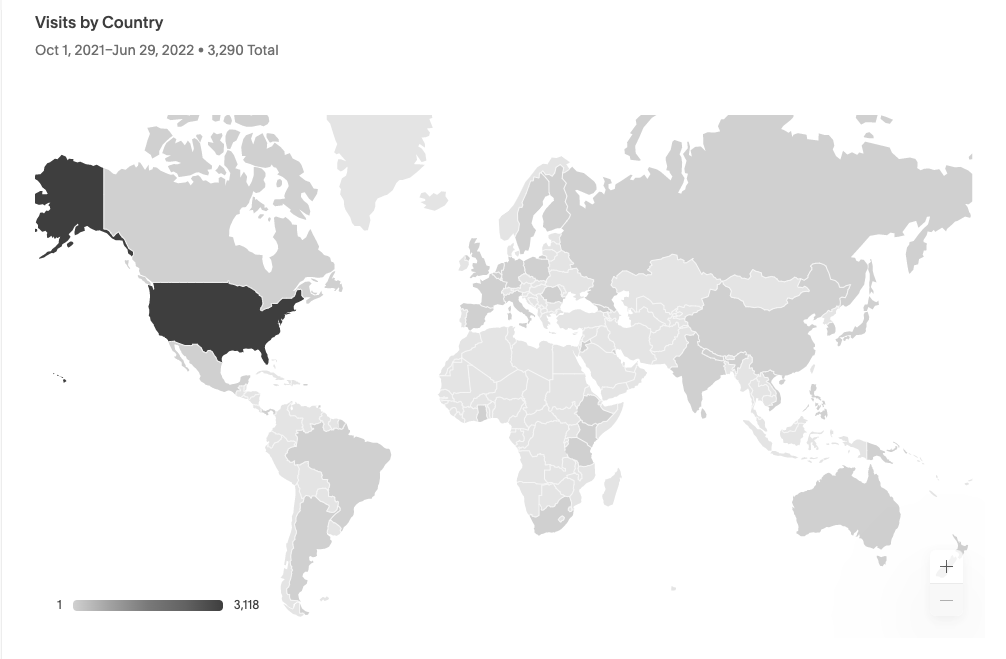
As of late June 2022, the resource sections of the website were in the nascent stages of being public, precluding any outcomes and impact measurements resulting from those pages. All other pages on the website to-date have otherwise garnered 3290 visits across 44 countries. As a proxy for viewer engagement, ~800 viewers returned to the site more than once, and ~780 visitors explored more than one page or link. Most site visits have been domestic with the top 3 states for viewership originating from WA, OR, and VA. The most visited page to-date besides the conference information/registration pages has been the docuseries page.
2. Development and delivery of a Network conference to initiate the network community and refine that initial community’s understandings of peri-urban agriculture and its barriers and opportunities to long-term viability.
Conference development was stymied between March and Fall 2020 due to the COVID-19 pandemic disruptions, restrictions, and related personnel capacity issues. The conference was originally intended to be to be held in Clark Co. Washington in Spring 2021, but was modified to an online format and rescheduled for delivery in Fall-Winter 2021 through early Winter 2022 due to anticipated COVID-19 restrictions on in-person gatherings. A logo for the was developed to brand the conference, and was informed by a graphic designer and the advisory team. The advisory team also informed the decision to opt for "Farming on the Urban Edge" as a more colloquial/descriptive title to be used for the Network conference.
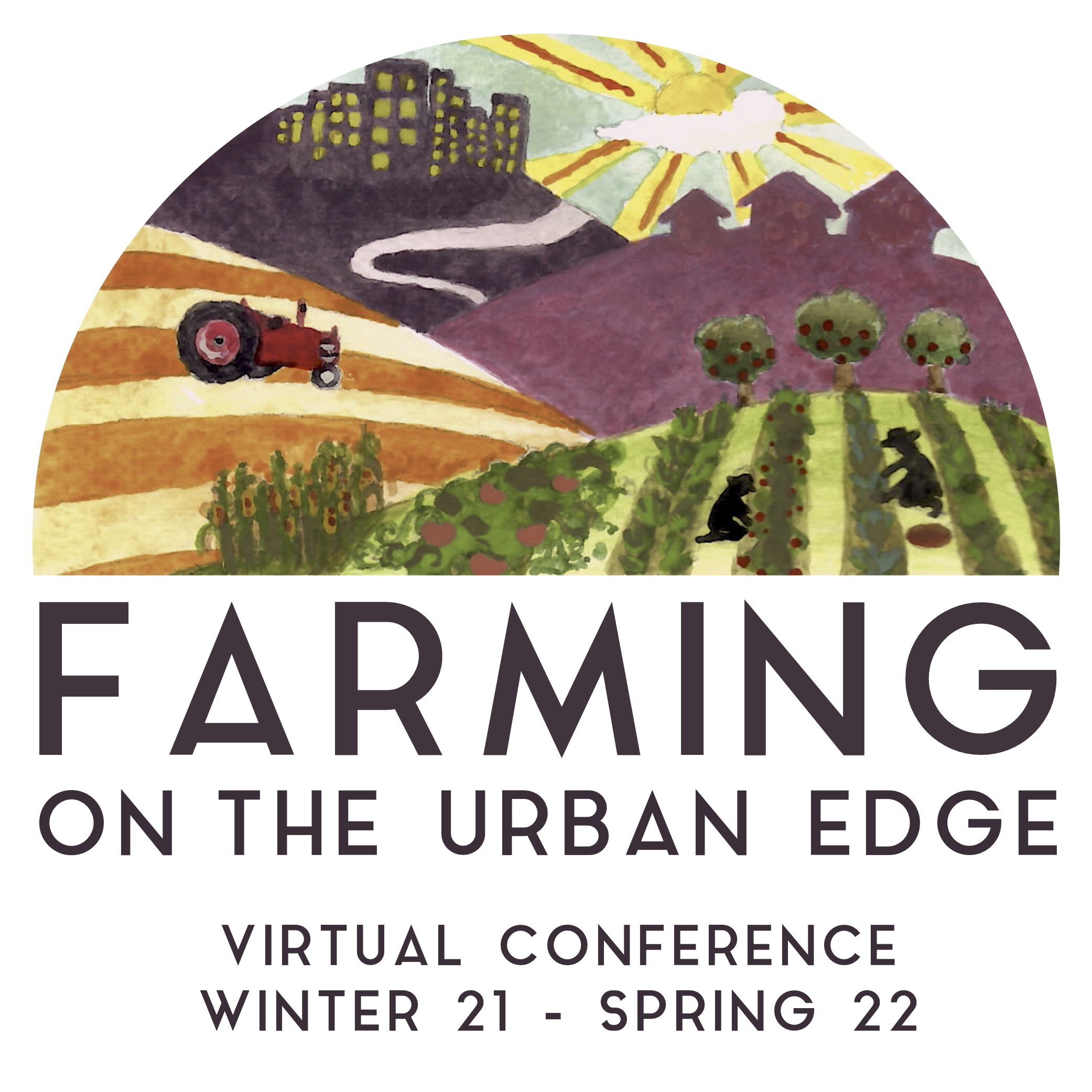
The conference was formulated into five 2.5 to 3 hr session tracks that were individually delivered on a the second Friday of each month with the first session on November 12, 2021 and the last session on March 11, 2022. Each conference session was discussion-based and featured 4 to 8 panel speakers pertinent to the theme of the session; farmers were consistently part of each speaker panel and coupled with a varying array of non-farmer stakeholder panelists. Each panelist was asked to gave a short introduction about themselves and thier relevance to the session, and likewise asked answer a question pertinent to the theme of the session. Most sessions included breakout discussion rooms with the audience, and each session ended with full open discussions and questions between panelists, facilitators and the audience.
The Conference was advertised locally/regionally and nationally, and ultimately involved 131 individuals in total from 18 US states and 3 Canadian provinces (registered attendees + panelists); this exceeded the original proposed target of 100 participants. Attendance within individual conference sessions varied between ~30-50 participants. Registration links, description of the conference, and links to pages with the session details were posted to the website at www.periurbanagriculture.org/conferencesessions.
This first conference constituted the nascent Network community, and post-event evaluations indicated that learning outcomes were positive. Event attendees indicated an average knowledge increase of 62% (where 100% = "game-changing") over their initial pre-conference knowledge levels, and indicated a 82% likelihood of incorporating knowledge gains into their farm and/or work with farmers. Session 4, Farming in Tight Quarters, was the highest rated session with indicated average knowledge gains of 70% and a 91% likelihood of incorporating knowledge gains into behavioral changes. By the end of the conference, 27 attendees had reported that they'd made changes to how they farm or in how they work with farmers as a result of knowledge gains from the conference (or the greater project), and 26 of 27 those individuals reported that those changes were already precipitating impactful benefits for them. Demand for future programming on peri-urban agriculture was indicated to be 97% (where 100% = "absolutely").
3. Development of a video documentary series chronicling the struggles and successes of peri-urban farmers to further understandings of peri-urban agriculture and The Network to a greater audience beyond the conference.
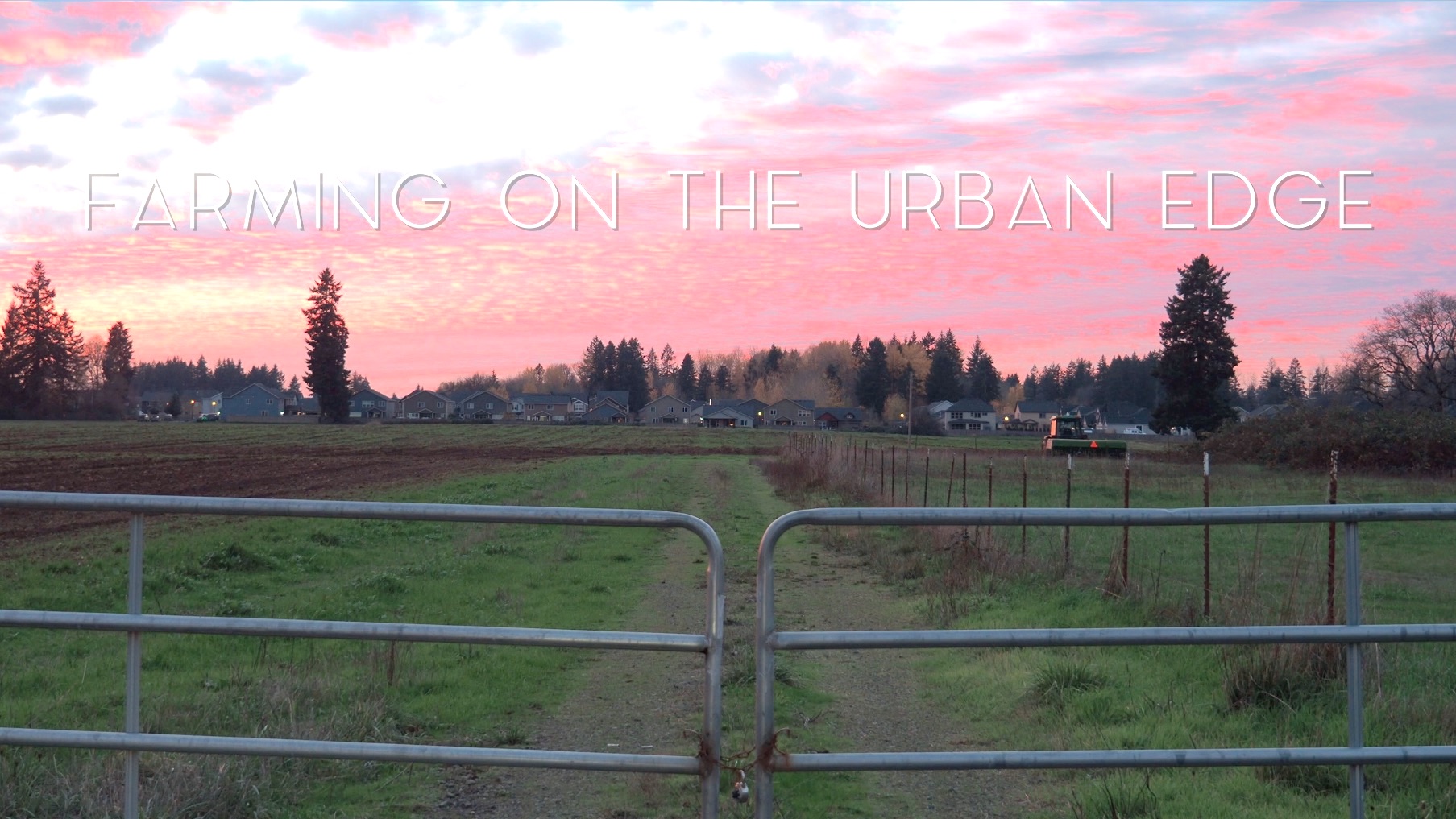
The video series was initially intended to help offset the loss of the important farmer-to-farmer and farmer-to-stakeholder learning opportunities that would have otherwise occurred through informal conversations at an in-person conference, but was ultimately developed into a durable educational product for ongoing impact.
A stratified array of farms/farmers were identified by the project team to help represent the diversity of peri-urban farmers of different sizes, ages, scales, experience levels, farming approaches, and backgrounds. Due to capacity constraints, farmers that participated in the docuseries were limited to the in the Portland and Seattle-metro areas of the Pacific Northwest region. A set of common interview questions was prepared with respect to the five learning areas outlined for the project, along with two other subsets of questions that were specific to either first-generation farmers or multi-generational farmers. Nine farmer interviews and most footage was filmed in either April (five Portland metro area farms) or June (four Seattle-metro area farms) 2021. Interviews also included two members of the project team, to intended provide broad-overview perspectives intended to compliment farmer interviews.
A single 3.5-minute introductory preview video of the overall project was first edited for project outreach and conference promotion purposes, and embedded on the home page of the Peri-Urban Agriculture Network website. Footage was then edited throughout Fall/Winter 2021-22 into five docuseries episodes ranging from 15-23 minutes in length that respectively mirrored the five learning areas/themes of each of the five conference session tracks. Episodes were then respectively premiered at the beginning of each conference session to frame the learning objectives and discussion points of each session. "Sneak peek" trailers of each session's respective docuseries episode were also used for were used for promotion of individual conference sessions through social media: (www.instagram.com/wsuextensionagswwa/). Episodes were then final-edited to be posted on the WSU Food Systems' YouTube Channel (https://www.youtube.com/playlist?list=PL3dlckIHe695xWPbdQMRYrw-agWd-Geru), and embedded into the www.periurbanagriculture.org/docuseries page for further public dissemination.
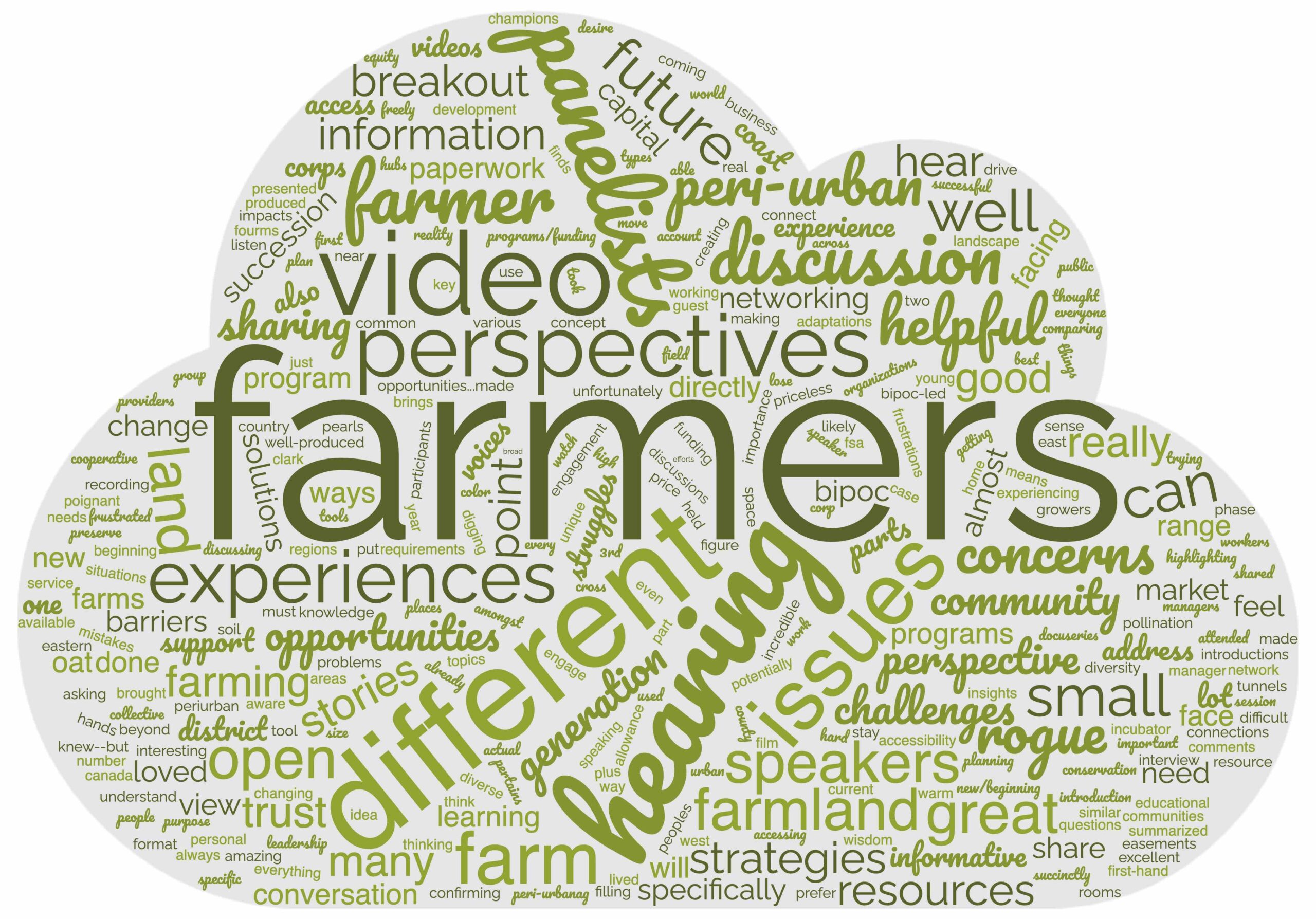
Conference participants indicated the docuseries videos as a prominent factor in written feedback when attendees were asked for the asked what the most informative part of the conference was for them. As of the end of June 2022, the docuseries (and initial preview video) has amassed a total of 83 hours of viewtime from 1023 views; approximately 25% of those views were from repeat viewers. Considering that YouTube videos typically lose 70% of viewers after 30 seconds of viewtime, the average viewtimes per view of the docuseries videos has been nearly seven minutes per view, suggesting a high level of viewer engagement. Additionally, most of the episodes were formulated to have the opening 1-4 minute sequence present a "short" version of the full video, suggesting that average view times were well beyond the point where the basic concepts of the episode had been communicated, and that the material was engaging enough to retain the average viewer beyond that point. The most watched and engaging episode from the series to date has been the first episode. Additionally most viewers watched the episodes from the periurbanagriculture.org website, suggesting that most video viewers also were exposed to the greater concept of the Peri-urban Agriculture Network. In addition to the docuseries video views on YouTube, 515 views have been garnered through the aforementioned "sneak peek" videos posted to Instagram.
Educational & Outreach Activities
Participation Summary:
Learning Outcomes
Project Outcomes
Information gathered throughout the project on the effects of urbanization on peri-urban agricultural communities have been delivered through at least 11 other presentations outside the project's original proposed deliverables, directly reaching a minimum of 257 more stakeholders. One presentation was recorded and posted to Clark-Vancouver (WA) Television's Website at https://www.cvtv.org/vid_link/30691?start=0&stop=7002. Information resulting from the project initiatives was also included in two other press articles, www.vbjusa.com/opinion/columns/food-agriculture-column/clark-county-agriculture-is-in-a-state-of-instability/, www.capitalpress.com/ag_sectors/grains/western-innovator-researcher-seeks-urban-opportunities/article_a89b4e1c-5c9b-11e9-9d4c-b7f3f6deaca6.html, and incorporated into the short film, The Hands That Feed Us about agriculture in peri-urban Clark County, WA. Ongoing outreach like this has resulted in project-derived information beginning to be incorporated into discussions surrounding proposed policy and economic development initiatives related to agriculture in the northern Portland-metro region that lies within southwest Washington, poising it for impact.
An active collaboration with Portland Community College, and at least 3 other incipient educational collaborative relationships and 2 research grant proposal submissions have also been built to date as a result of this project. WSU Extension has also since included peri-urban agriculture within the job description of an upcoming regional faculty hire. Income generated from conference registration fees have been earmarked to serve as foundational funds to support the next Network conference.
"I enjoyed the fruitful conversation between conservative... and progressive voices as we will have to bring these perspectives together to effect meaningful change."
- Agricultural resource provider commenting on the "Farming on the Urban Edge" Conference
"The film was poignant almost to the point of being hard for me to watch. As a farmer, I also feel many of these problems and frustrations."
- Farmer comment in response to watching Episode 5 of the "Farming on the Urban Edge" docuseries
"I would love to see this continue and put together a strategy to communicate with decision makers and create spaces where farmers voices and stories are heard."
- Agricultural resource provider participant comment following session 5 of the "Farming on the Urban Edge" conference
"The video was priceless! Specifically hearing about the adaptations and strategies that 3rd generation farmers used to stay in business and thier concerns about the future."
- Peri-urban farm-food system stakeholder comment after watching Episode 3 of the "Farming on the Urban Edge" docuseries
"Coming from a Conservation District perspective, it was good to hear what is not helpful and what is helpful for farmers. There were a lot of concerns brought up with paperwork and accessibility to different programs/funding [esp. regarding BIPOC farmers] that was good to hear so I can figure out ways our District can address those issues in our own community."
- Agricultural resource provider comment following Session 2 of the "Farming on the Urban Edge" conference
"In the world of farm support, there are few resources and information for periurban and urban farmers. The more, the better."
- Agricultural resource provider comment following Session 1 of the "Farming on the Urban Edge" conference
“…So many things were I thought were unique to [the area I farm in] were actually unique to this concept of peri-urban farming… I’ve never heard of all my challenges described so succinctly before…”
– Farmer participant comment made during Session 1 of the "Farming on the Urban Edge" conference
Peri-urban farming is a frequently under-represented sector of agriculture that holds a likewise under-recognized role in the agricultural makeup of the country. It often contains some of the most productive farmland in the country, highest per-acre returns from agricultural enterprises, and is the sector most directly responsible for connecting urban populations with the realities of food and fiber production, land-based economies, working land stewardship, and the importance of food security. Peri-urban agriculture in the western US is under a particularly formidable threat due to a historically skewed perception that farmland is abundant enough to develop for other urban uses, that farming is something that occurs somewhere else, and that peri-urban farming has been rendered economically obsolete and culturally antiquated. Learning outcomes of this project have highlighted that this is a perilous misperception that threatens to permanently undermine the food security capacities of urban areas, squanders opportunities for agricultural enterprises to perpetually benefit urban communities, and places near-impenetrable barriers-to-entry on generations of would-be farmers coming out of urban centers. The future sustenance of of peri-urban agriculture is dependent on innovation and novel strategies for farmland access, collective support, and increasing per-acre revenues, including alternative business models, high-value specialty crops, space and labor-efficient production techniques, and non-crop enterprises that emphasize agricultural education and fostering of next generations of farmers and farm-food supportive constituents. Accurate economic analyses and characterization of peri-urban farm needs are also needed to assure that peri-urban farms are represented in-context, and supported by well-informed policy decisions.
Information Products
- Farming on the Urban Edge Docuseries (Multimedia)
- Introduction to Farming on the Urban Edge (Video)
- The Peri-urban Agriculture Network Website (Website)